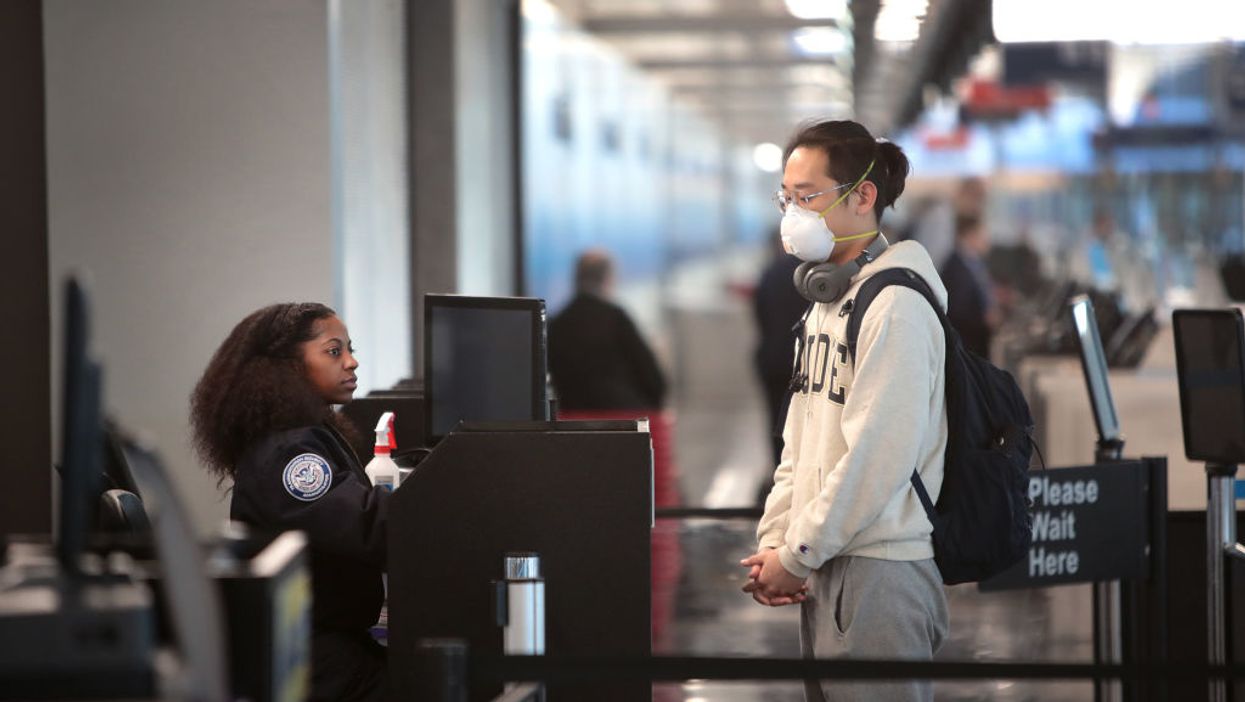
Photo by Scott Olson/Getty Images

Thousands came directly from Wuhan, and most were not screened
More than 380,000 people entered the United States on flights from China in the month of January while the Chinese government was downplaying the severity of the coronavirus.
In January, over 1,300 flights from China arrived in U.S. airports, according to data gathered by the New York Times. Most of the flights touched down in major population centers such Los Angeles, San Francisco, New York City, Chicago, and Seattle.
That number doesn't even include travelers who arrived from China on itineraries that first stopped in a different country, a spokeswoman for the Department of Homeland Security told the Times. She estimated that these indirect fliers accounted for about one quarter of travelers from China.
To make matters worse, during the first half of the month, while Chinese officials were minimizing the dangers of the outbreak, no travelers from China were screened for potential exposure to the virus. The Times report noted that travelers weren't screened until mid-January, and by that time roughly 4,000 people had entered the U.S. directly from Wuhan, where the outbreak began late last year.
In December, reports began to circulate about an onslaught of "mystery pneumonia" cases hitting Wuhan. Many within the country believed the cases to be the result of a new SARS-like virus. One scientist, Dr. Li Wenliang, along with several others, tried to warn people on social media about the potential for an outbreak, but the Chinese Communist Party quickly silenced them.
It wasn't until New Year's Eve that China informed China's World Health Organization office about the unknown illness, and even then, the only action that was taken was to close the wet market in Wuhan that was said to be the virus' origin point. Over the following weeks, Chinese officials clamped down on information, reported no new cases, and insisted there was no evidence of human-to-human transmission — all the while allowing people to leave the country.
When the truth about the virus began to come out, President Trump ordered a ban on travel from China. That was on Jan. 31. At the time, the move was criticized by Democrats and the mainstream media, but in reality, it was likely too late to stop the initial spread of the virus.
On Jan. 20, the U.S. announced its first confirmed COVID-19 case, but the virus was likely circulating in the country for weeks prior.
A study released in March found that if preventative measures in China had been "conducted one week, two weeks, or three weeks earlier, cases could have been reduced by 66 percent, 86 percent and 95 percent respectively — significantly limiting the geographical spread of the disease."